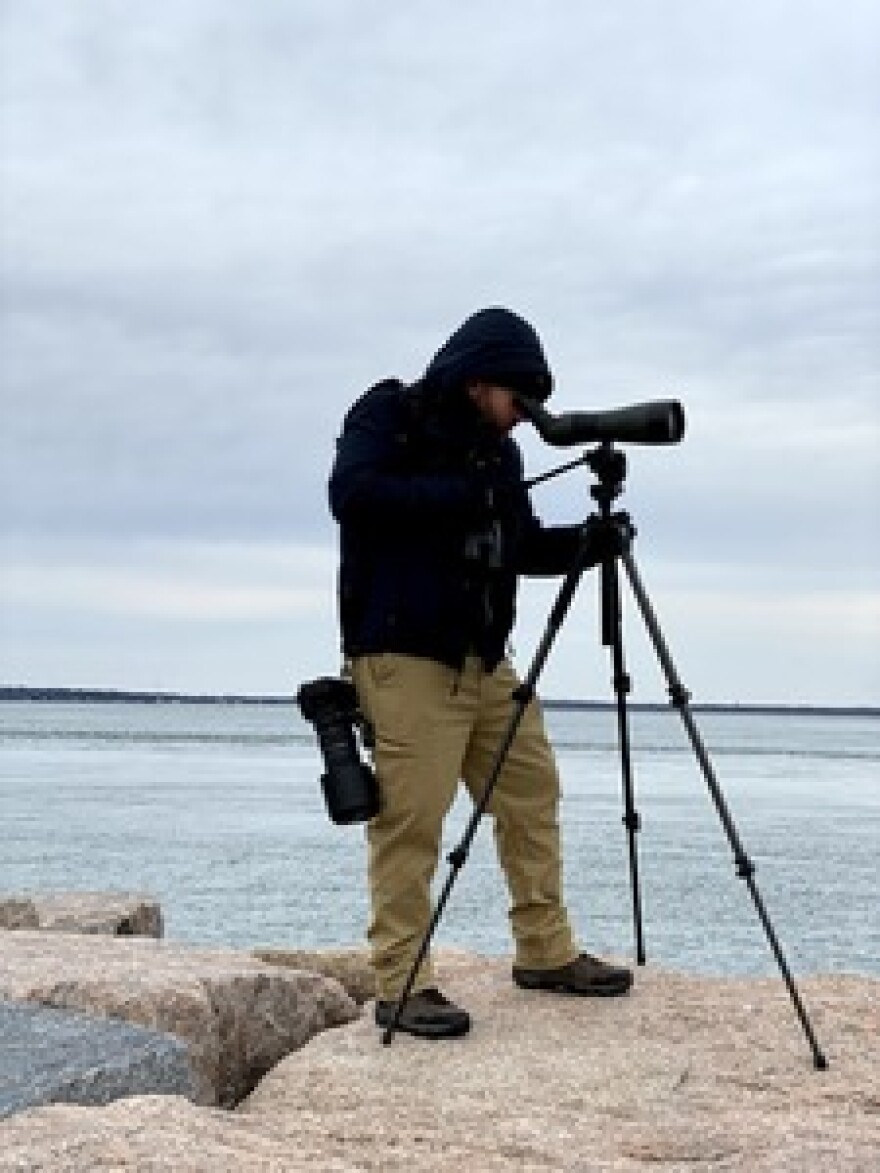There are loads of benefits to spending more time outdoors. Aside from improvements to physical and mental health, it can also contribute to the health of the environment.
Last year, David LaMagna logged thousands of observations into an app — the most out of anyone on Long Island. The app shares that important data with experts.
WSHU’s Sabrina Garone spoke with David LaMagna about how participating in community science can be a fun way for folks to get out into nature.

WSHU: You are very active on an app called iNaturalist, which for those listening who might not be familiar, it's essentially a social media app where folks can share photos, and sometimes audio, of their observations in nature. I just downloaded it a few weeks ago, and it's a lot of fun — I plan on making it my entire personality in 2024! Could you tell me about your experience on the app, and some of the kinds of species you try to keep an eye out for?
DL: So, my experience going out and looking at nature started with birds. For the longest time I would use eBird, which is another citizen science app. And during COVID, being home more, I wanted to explore what's in my own backyard. And that led me to start looking at moths and butterflies, and all sorts of cool insects that most people might be a little hesitant to look at, but they're really fascinating. And being with my own children — watching a bumble bee work is fascinating! And realizing that there are so many different species in a small home garden made me wonder what else is on Long Island, and what biological treasures we have in our shared home.
WSHU: And like you said, this app is a great example of community science, or citizen science. Can you speak to the importance of residents getting involved in an effort like this.
DL: iNaturalist is a great way to democratize science. Anyone can make an observation of a wild creature, whether it's in the ocean, on land, or in their backyard. And it contributes to citizen science. There have been a number of papers written using information from iNaturalist. Over time, scientists can see different trends as the database builds and more information gets put into it. Science has been here for a couple of hundred years, and we're still discovering what makes a home on Long Island. We still don't know, and that's part of the fun of it! I've uploaded a few things on iNaturalist where no one else had made an observation of it on Long Island. I'm an amateur user, and that means anyone has the opportunity to make a discovery, so to speak.
WSHU: And what do you think it is about Long Island that makes it a great place to view wildlife?
DL: Long Island, and a lot of the Northeast, is kind of like a confluence. It's not quite the north, and it's not quite the south. And we've got a great mix of different species. Some birds that move down from northern latitudes in the winter time, we get different types of plant communities — some that are very rare like the ones out on Fire Island! We have the Hempstead Plains, we have communities that are still pretty healthy out in Montauk. There are some beautiful pockets all over the island. And they're home to a wide range of species, and it's a really great scavenger hunt to go out there and see what's there!
WSHU: And I understand you're also a science teacher. Do your students share a similar enthusiasm for what's going on in the environment, locally?
DL: At the school, we have designated a courtyard where we've been plating native plants, trying to get an ecosystem going. There is also a sister app to iNaturalist called Seek, which falls under the federal standards for children and students to use. It protects their privacy and location, so they can safely explore at any age, if they have access to a smart device!

WSHU: We're in a new year, and for residents who really want to explore more of Long Island in 2024 and spend more time outdoors, what spots or places do you recommend people check out?
DL: Some of my favorite locations are on my stops to and from work — in and around Blydenburgh State Park, Sunken Meadow State Park. I love taking a drive out to the Pine Barrens, especially. It's a really unique, special habitat. But I would also encourage people to plant native plants at home, and see what can be supported in your own backyard. You don't have to get in the car and go some place. You can enjoy spectacular biodiversity sitting in a lounge chair looking at your own garden!






